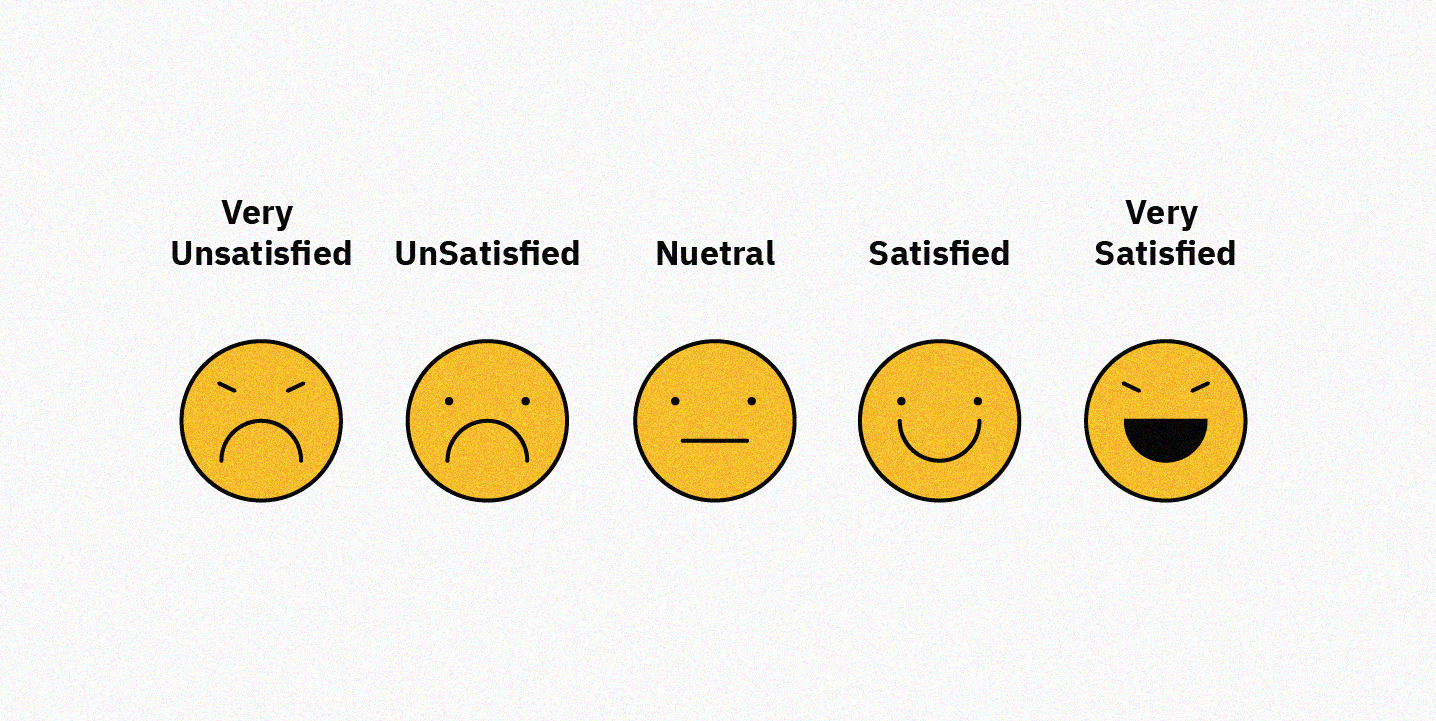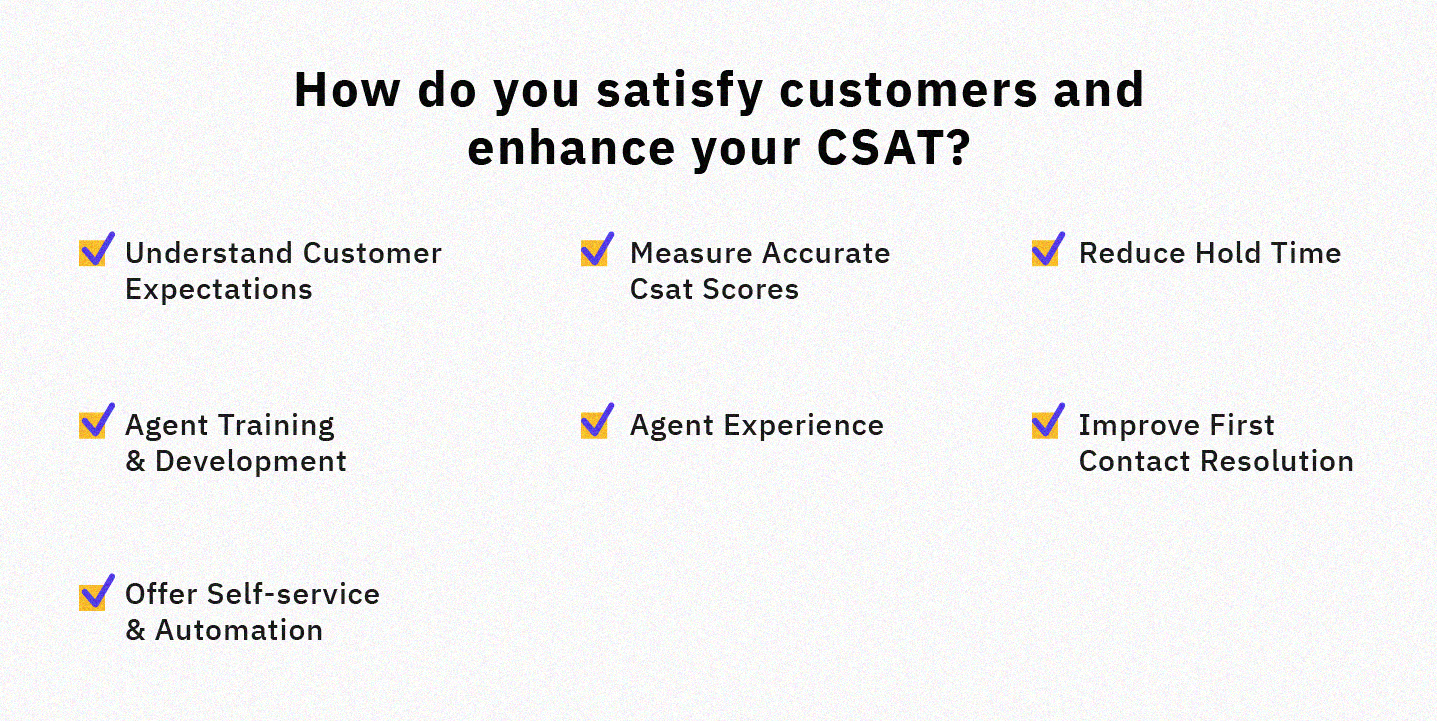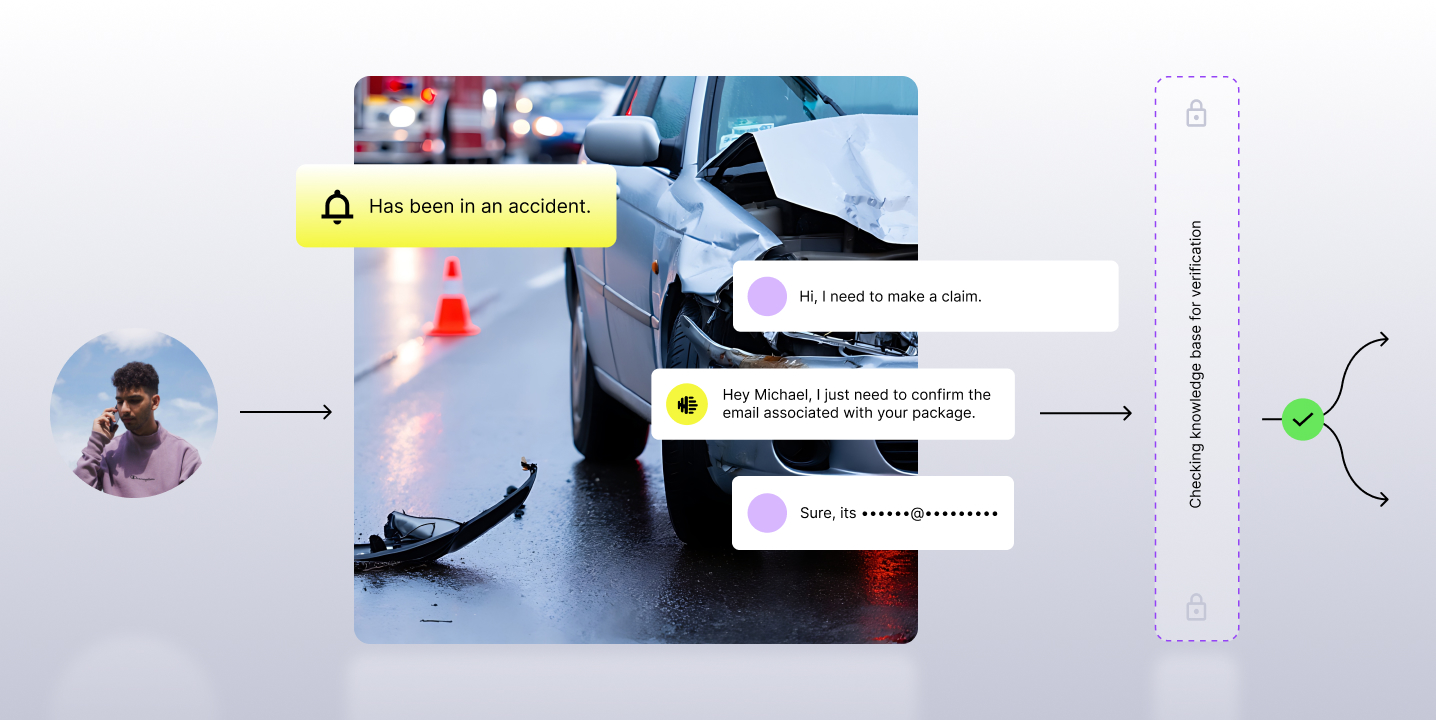According to a research conducted in 2019, CSAT remains the “king” of contact center metrics, with almost 90% of industry professionals viewing the metric as “very important”. (Source)
What does CSAT stand for? Why is it believed to be so important in contact centers? What are the tools and parameters to assess it and how can we boost it?
What is CSAT?
CSAT is short for customer satisfaction, a commonly-used KPI to track how happy customers are with an organisation’s products and/or services.
The term CSAT is often expressed as a ‘CSAT score’ as a numerical measure in attempt to quantify the subjectivity of customer satisfaction.

A score of 80% is considered good, although this varies across industries. On the other hand, anything below 20% is problematic and needs to be improved. A number of methods such as CSAT surveys, feedback, rating scale, etc. are used to gauge customer satisfaction.
Why do you need to measure CSAT?
Conventional business wisdom states that something that cannot be measured, cannot be improved. CSAT score can shape crucial business determinants such as customer loyalty and brand advocacy through word of mouth or customer reviews.
Measuring CSAT gives you keen insights into your business like customer response to new products or services, newly added product features, marketing campaigns, agent performance, technical support and access to information.
A sudden drop in CSAT score can help in assessing loopholes in internal workflows such as customer handling, agent training, internal knowledge base etc. CSAT scores act as a brilliant blueprint for any glaring gaps in process or agent coaching programs.
How is CSAT Calculated in a Contact Center?
Two common KPIs used for calculating customer satisfaction are CSAT score and Net Promoter Score (NPS).
CSAT Score
It is measured on a percentage scale right after closing an interaction with the customer. This data is gathered by sending a web-link to the customer via SMS or email. The standard scale shown below is used to measure the CSAT score:
Very Dissatisfied/Dissatisfied/Neutral/Satisfied/Very Satisfied

CSAT score is then calculated using the percentages of “Satisfied” and “Very Satisfied” responses out of the total responses received. The formula for calculating CSAT score is:
CSAT Score= (Total number of satisfied responses (ratings of 4 or 5)/ Total responses) × 100
Net Promoter Score (NPS)
This takes into consideration customer satisfaction and happiness over a longer span of time. NPS is measured on a scale of 0-10 against a relevant question such as “How likely are you to recommend our product/service to someone else?”
Based on the scores, customers are divided into three segments:
- 6 or below are called Detractors. These are unhappy customers who could damage your brand image through negative word of mouth.
- 7-8 are the Passives who are satisfied but unenthusiastic and can shift loyalties on being offered competitive deals.
- 9-10 are the Promoters who are enthusiastic about your brand and will recommend it to the others, fuelling growth.

NPS= (Percentage of Promoters - Percentage of Detractors)
For instance, if the percentage of Promoters was 60 per cent and that of Detractors was 20 per cent, your NPS is 40. As the services improve, companies can gain a bigger proportion of Promoters and shrink the number of Detractors and Passives, thus gradually increasing the overall Net Promoter Score.
The primary difference between CSAT and NPS is the duration of customer satisfaction. CSAT estimates the instant customer sentiment while NPS quantifies long-term customer loyalty and happiness.
Both parameters, however, are important and complement each other. While CSAT score points out the key areas for improvement, NPS gives an overall picture of the business.
How do I get customers to fill CSAT?
There are different ways to understand a customers’ perception of your business. Unlike CSAT scores, some of these methods are subjective in nature but provide a detailed insight into specific pain-points.
CSAT survey
In this method, a single question can assess the overall satisfaction of the customer. For example, the question can be: “How would you rate your experience after interacting with our representative?”
Surveys are easy to comprehend and have the least friction while responding. These barely take a few seconds and represent a more focused and authentic view of the data. The survey however, is limited to the interaction and microscopic in its focus and does not accurately reflect on the overall perception of the customer towards the business.
Open-ended feedback
Here the customer is given an opportunity to respond in detail instead of a scale or from amongst a few available options.
Questions such as “How would you describe your experience after being served by our representative?” seeks a subjective and open-ended response from the customer. While this may not help the organization arrive at a figure like CSAT score or NPS, it nevertheless gives a vivid picture of specific customer experiences.
Rating scale
This is a highly interactive way to collect responses. Rating scales are language-agnostic and make the survey a fun experience. The feedback marked may later be converted into numerical values in the back-end.
What is a good CSAT score?
CSAT score can vary from industry to industry. For example, smartphone companies have an average CSAT of around 80 while for internet service providers, it drops to 65. The global benchmark across industries is set at around 86 per cent, but contact centers are recommended a score that is 80 or higher.
How do you satisfy customers and enhance your CSAT?
When companies take concrete steps towards customer satisfaction, it directly reflects in their CSAT score. Here are some measures to raise the customer satisfaction levels:
1. Understand customer expectations
What does the customer expect from the brand? Faster problem resolution, customized service, or better offers and discounts? Only after this foundational understanding is established, the expectations of the customers can be met and an approach can be devised to satisfy them.
2. Measure accurate CSAT scores
Customer feedback may be riddled with errors and biases. So, to arrive at an accurate CSAT score, contact centers must ensure that all the outliers are removed and errors are rectified.
3. Reduce hold time
Hold time is one of the leading causes of customer dissatisfaction and reducing it can significantly improve the CSAT score.

4. Agent training and development
Agents are the front-line actors of a contact center and must be well-trained to effectively resolve issues and promptly answer customer queries. Agent training and coaching doesn’t just enhance their knowledge and expertise but also adds to their tally of interpersonal and soft skills. All of these have a direct bearing on customer satisfaction.
5. Agent experience
If agents are disgruntled, it directly affects their behavior with customers.
As a rule of thumb, ASAT (Agent Satisfaction) translates directly into CSAT. ASAT is shaped by factors such as flexible working style, self-management, sufficient training and timely feedback. Agents being your frontline representatives have a direct and significant impact on how customers view your brand. If the agents are satisfied, it will reflect in their quality of interaction with the customers.
6. Improve First Contact Resolution
Every time an agent resolves an issue on the very first incidence, the customer’s confidence in the brand is boosted and his satisfaction highly enhanced. FCR conveys that the customer’s query is important and the agent is well-versed in the resolution process.
7. Offer self-service and automation
Queries like account balance, order delivery status, refunds or bill amounts, are redundant and do not necessarily require an agent. This significantly reduces overall agent work-load and frees up time for them to focus on more complex queries.
Conclusion
CSAT is one of the most crucial KPI metrics for a contact center as the nature of the industry mandates regular and intensive interaction with the customers. However, CSAT is only a reflection of the various underlying factors that shape a business. Maintaining a good CSAT score therefore requires enhancing customer satisfaction through a number of internal interventions.

















